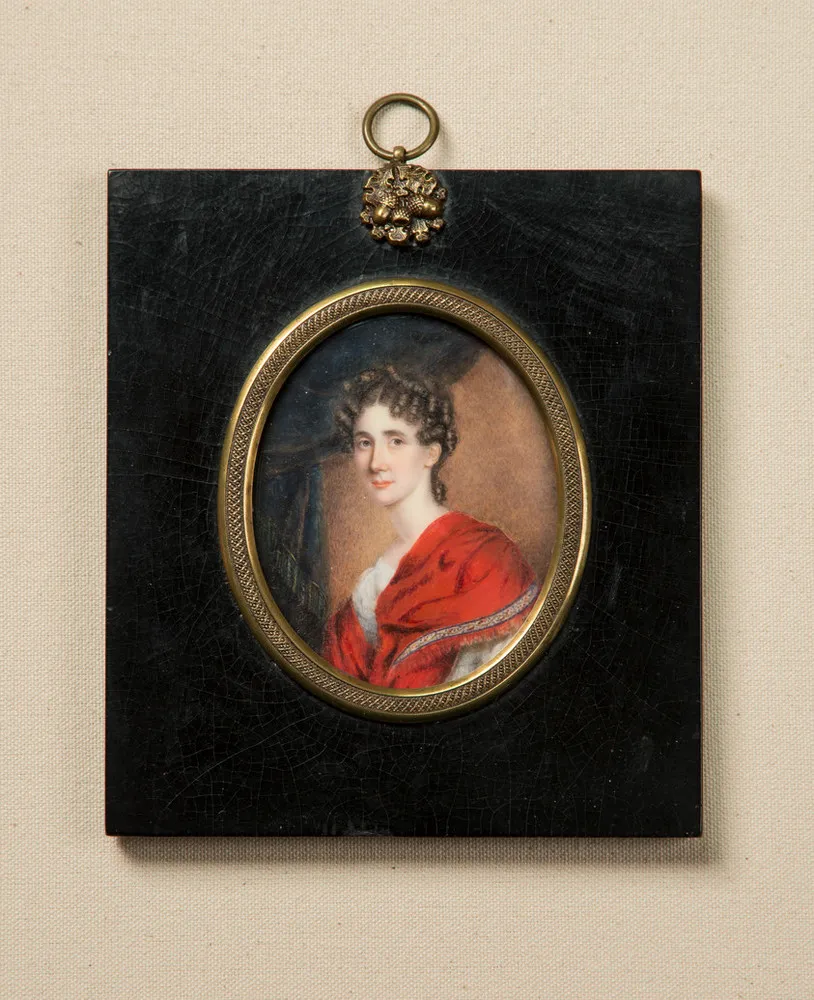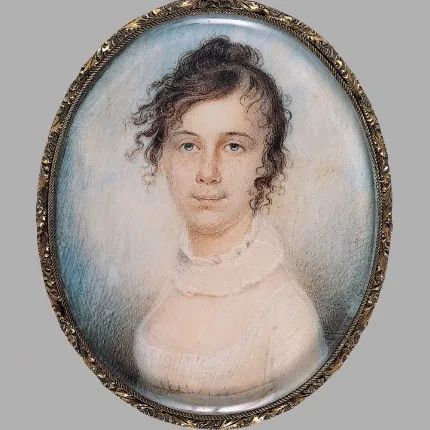Nancy Aertsen
Close up of Nancy Aertsen


Though she also produced landscapes, still lifes, and portraits, Anna Claypoole Peale was best known for watercolor-on-ivory miniatures like Nancy Aertsen.
Peale learned the demanding medium from her father, James, who also specialized in miniature painting. Rosalba Carriera developed the watercolor-on-ivory technique during the 18th century, but it was still relatively new to 19th-century America at the time Peale was working.
Society deemed miniature painting appropriate for women because it focused only on the sitter’s head and shoulders, rather than the regions of the body considered indelicate for women to render. Nonetheless, miniature painting had been dominated by male artists since its development during the 16th century, a dominance Peale successfully challenged.
Nancy Aertsen typifies Peale’s miniatures in its detailed naturalism, especially evident in the highlighted ringlets of the sitter’s hair. In Peale’s skilled hands, the sitter’s warm eyes and shy smile hint at her character, as well as providing a recognizable likeness. As in most of her miniatures, Peale places her subject in a simple setting, so that our attention remains focused on the sitter.
Miniatures like this one would have been commissioned by a loved one, often a spouse, so that they could be carried as a memento. They functioned much as the snapshots we keep in our wallets or on our phones do today.
